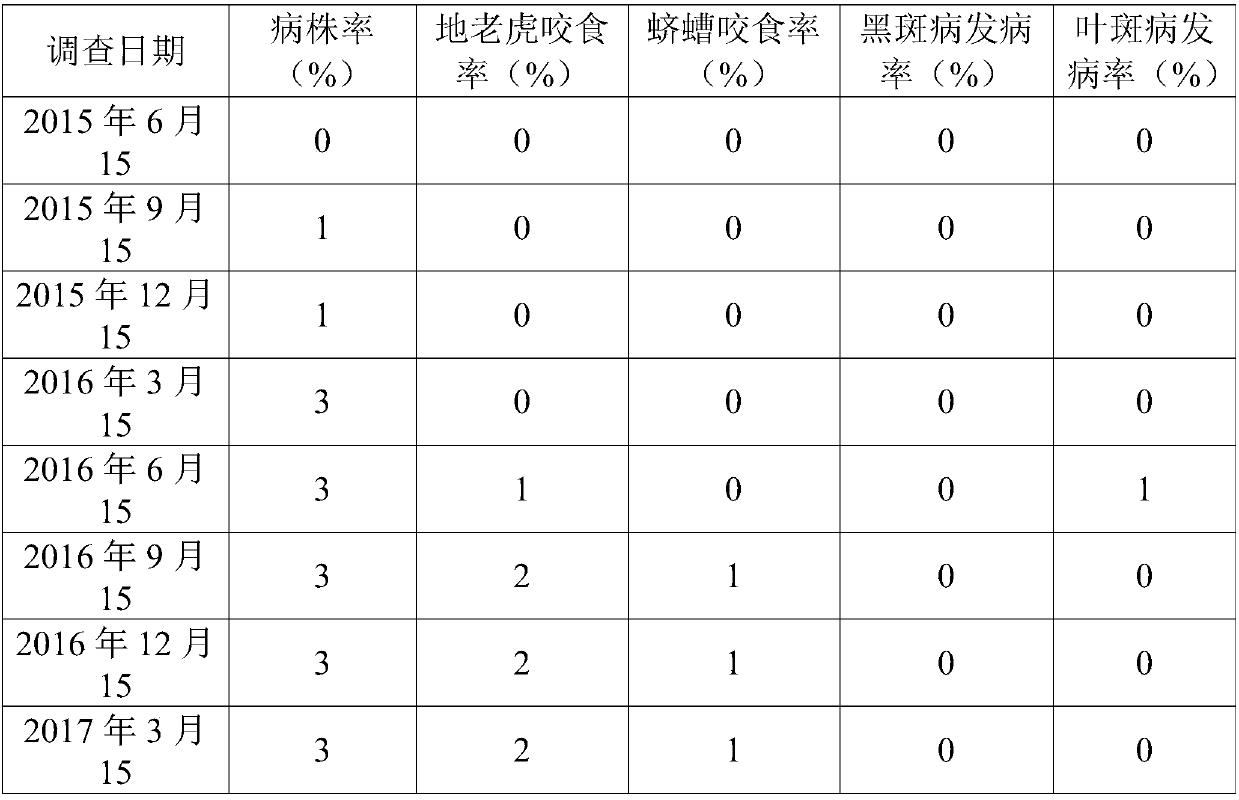Method for interplanting mint and chinaberry to prevent and control polygonatum sibiricum diseases and pests
A technology for diseases and insect pests and Polygonatum chinensis, which is applied in the field of interplanting mint and neem to prevent and control diseases and insect pests of Polygonatum chinensis, can solve problems such as inability to maintain health and strengthen health, and achieve the effects of inhibiting the formation of pathogenic fungi, promoting growth, and increasing fertilizer efficiency.
- Summary
- Abstract
- Description
- Claims
- Application Information
AI Technical Summary
Problems solved by technology
Method used
Image
Examples
Embodiment 1
[0033] The method for interplanting mint and neem to prevent and control Polygonatum diseases and insect pests, the method comprises the steps:
[0034] S01. Cultivated land pretreatment realizes sterilization and disinfection of cultivated land soil
[0035] a1. Because the insect eggs are generally 6-9cm underground, plow the cultivated land 10cm deep, and irrigate to a distance of 4cm from the surface of the cultivated land, so that the entire cultivated land is completely submerged, and the eggs can be killed. Drain the water after two weeks, and let the cultivated land dry naturally until the soil is soft to facilitate subsequent sowing;
[0036] b1. Spread the mixed hay material in the crop orange stalks, camphor leaves and wormwood on the air-dried cultivated land. After fully burning out, mix the hay material ash with the soil evenly, and then level the cultivated land;
[0037] c1. Cover the leveled cultivated land with a 5cm-thick composite soil prepared by blending...
PUM
 Login to View More
Login to View More Abstract
Description
Claims
Application Information
 Login to View More
Login to View More - R&D
- Intellectual Property
- Life Sciences
- Materials
- Tech Scout
- Unparalleled Data Quality
- Higher Quality Content
- 60% Fewer Hallucinations
Browse by: Latest US Patents, China's latest patents, Technical Efficacy Thesaurus, Application Domain, Technology Topic, Popular Technical Reports.
© 2025 PatSnap. All rights reserved.Legal|Privacy policy|Modern Slavery Act Transparency Statement|Sitemap|About US| Contact US: help@patsnap.com

